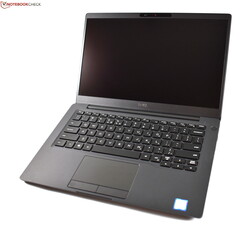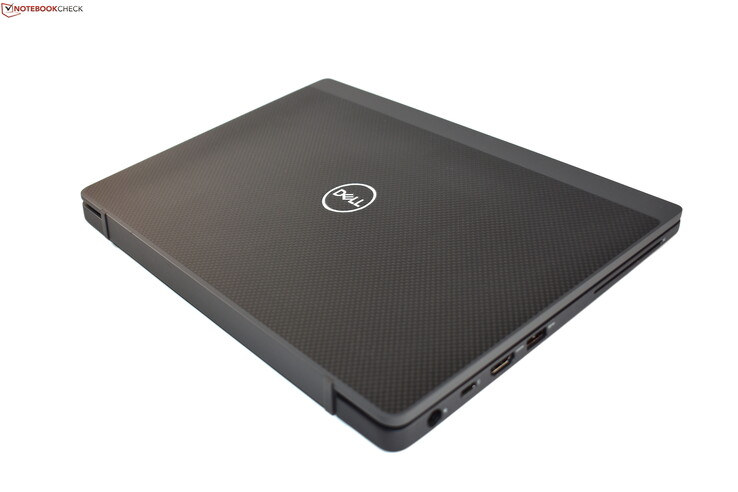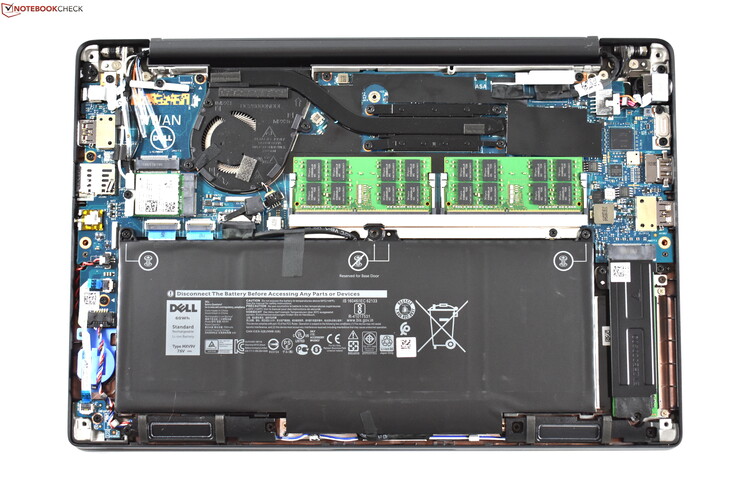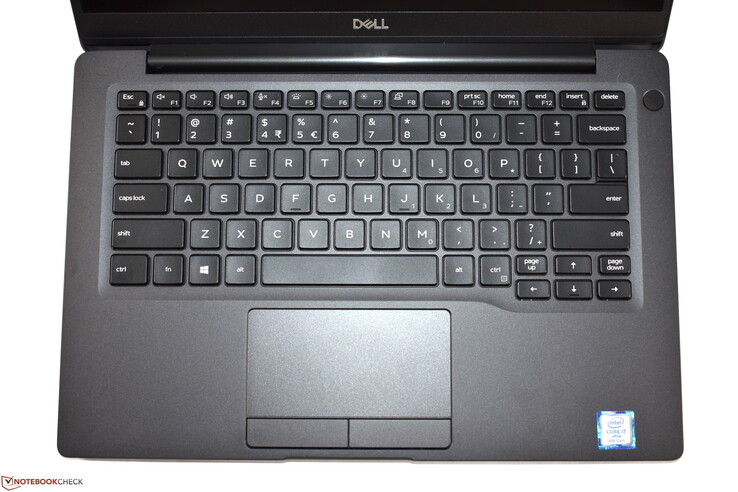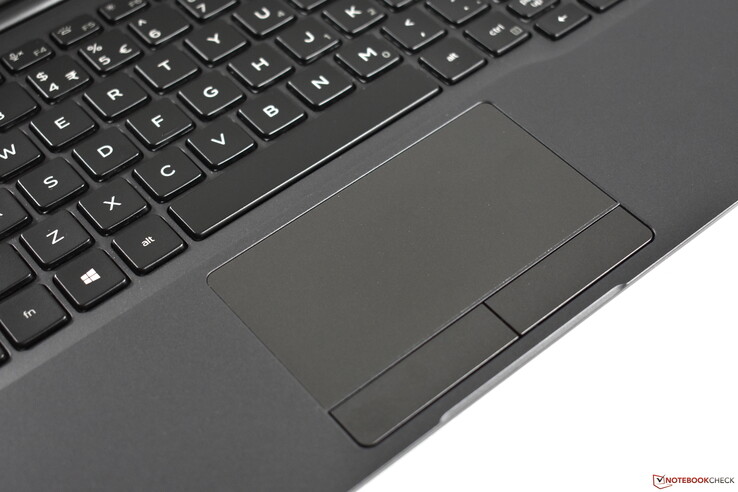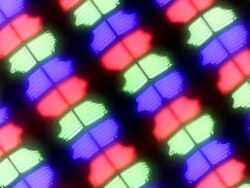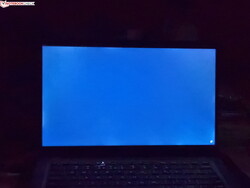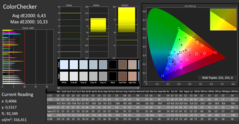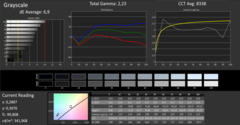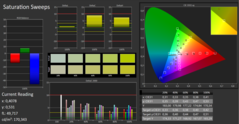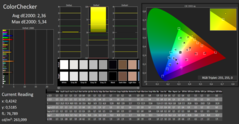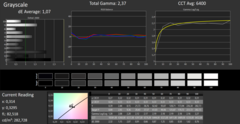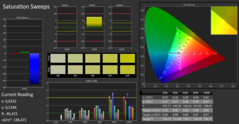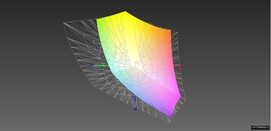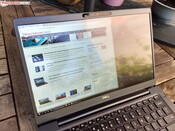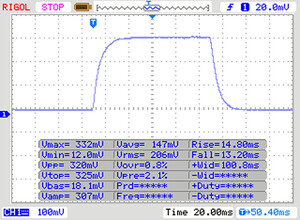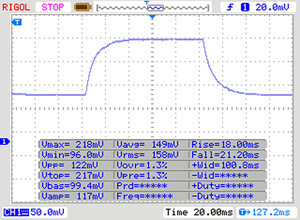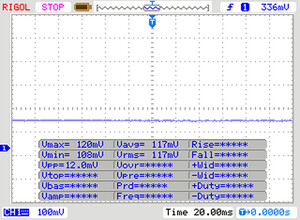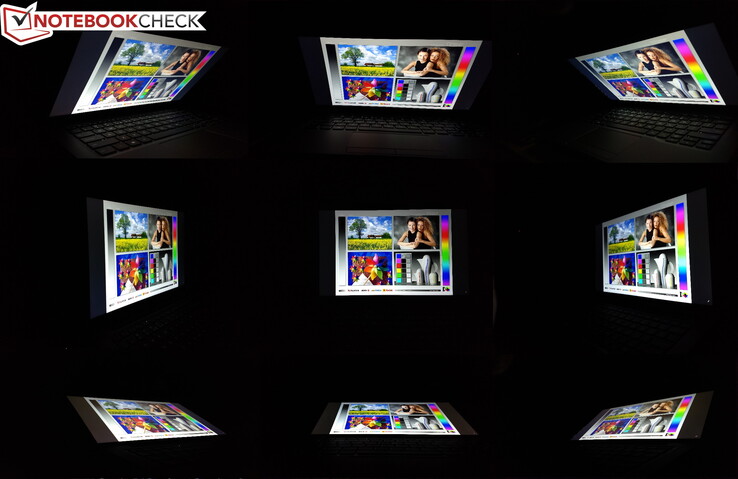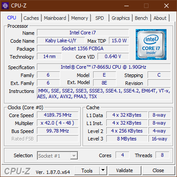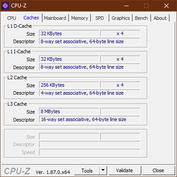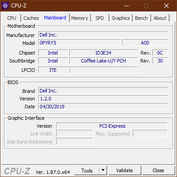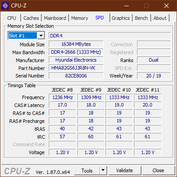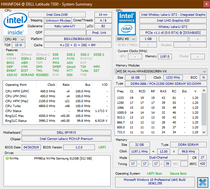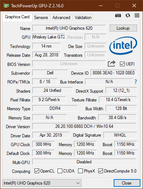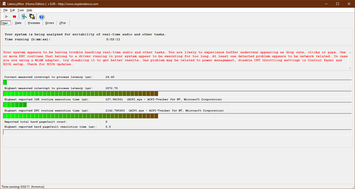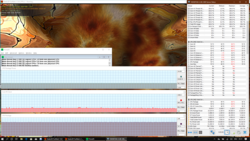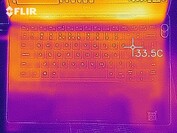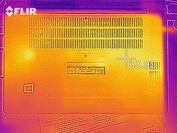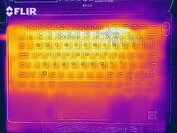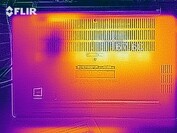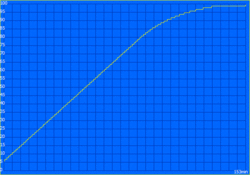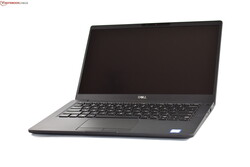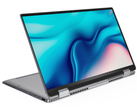Dell Latitude 7300 Laptop Review: business subnotebook falls short of its performance goals

The Latitude-series is one of Dell’s most important brands. Among consumers, it may not be as widely known as the XPS-series. However, that is not the market segment Dell is aiming for. Latitudes are made for the business-to-business market – think big corporations.
Today’s review unit is a very typical Latitude business laptop. The Latitude 7300 is a traditional subnotebook for business road warriors, and it is also the successor to two separate Latitude models: the Latitude 7290 and the Dell Latitude 7390. Basically, Dell has cancelled its 12.5-inch series and decided to focus all of its business subnotebook attention on the 13.3-inch Latitude 7300 instead. The name is a bit of a quirk, too. Instead of introducing a new scheme Dell decided to simply push the reset button and start from scratch. The fact that the 7300 is the successor to the Dell Latitude 7390 might not be particularly intuitive; however, it allowed Dell to keep its well-known and established numbering scheme alive.
Dell’s largest competitors in this market segment are without a doubt Lenovo’s ThinkPads and HP’s EliteBooks. Accordingly, with the Lenovo ThinkPad X390 and the EliteBook 830 G5 we chose two similar subnotebooks made by these OEMs to compare Dell’s latest Latitude to. In addition, we also included Dell’s popular XPS 13 9380, a 13.3-inch consumer-level notebook.
Our review model is not available everywhere. Our particular SKU came with carbon-fiber lid, Intel Core i7-8665U, 32 GB of RAM, 512 GB SSD, and an FHD touchscreen. The most powerful Latitude 7300 available in Europe at the time of writing featured the same CPU and the same SSD but only half the amount of RAM, an aluminum case, and a non-touch LCD display. In return, the aluminum case was not available at all in the US and Canada at the time of writing, and all 7300 SKUs sold in the US and Canada were equipped with the carbon-fiber lid instead.
Case
Reflecting the rebooted number pattern Dell redesigned its Latitudes noticeably. For starters, Latitudes are now available in two colors: silver and dark gray. The latter very closely resembles the previously only available color, black, and was also the color our review unit was clad in. Other design changes include the coloring of the secondary key assignment that can be reached via FN key. Instead of blue those are now printed in white. Other features, such as overall shape and proportions, remained largely unchanged, and the Latitude 7300 is easily recognizable as the Dell Latitude 7390’s successor.
The silver and the dark gray SKU differ in more than just color. While the silver Latitude 7300 is made of 100% aluminum with a brushed finish on the lid cover and palm rests the dark-gray SKU is coated with a matte rubberized finish, and it features a carbon-fiber pattern on the lid emphasizing the fact that the lid is in fact made of said material while the base unit is made mostly of magnesium.
Build quality is immaculate, and we found neither gaps nor crevices anywhere on the case. Rigidity is also superb, and we were unable to warp the base or depress the keyboard area. The thin display was somewhat bendier but nothing to be worried about. The display panel is well protected against external forces, and we only noticed minor distortions when force was applied along the edges. Touch and feel are very premium and, thanks to the matte rubberized coating, also very business-like. Those who prefer metal are obviously better off with the silver SKU.
The single wide hinge is very firm and causes almost no teetering whatsoever. It allows for an opening angle of 180 degrees and one-handed operation of the display lid.
While the Latitude 7300’s footprint remained practically identical to the Latitude 7390 the new model is both thicker and heavier. Compared to the Lenovo ThinkPad X390 and HP EliteBook 830 G5 Dell’s contender is significantly smaller but also thicker and heavier in return. The only device even smaller than the Latitude 7300 is Dell’s own XPS 13.
Connectivity
Despite the major redesign, connectivity remained largely unchanged, which even includes the positioning of the ports. This means that unlike the Dell XPS 13 the Latitude 7300 continues to feature legacy ports such as USB-A and HDMI. Unfortunately, it lost its folding Ethernet port, which was eliminated without replacement.
The one thing we found irritating was the fact that Dell continues to include a proprietary charging port instead of an additional USB-C or Thunderbolt 3 Port for charging.
SD Card Reader
Like its predecessor the Latitude 7300 features a microSD card reader on the right-hand side (unlike the Lenovo ThinkPad X390). The HP EliteBook 830 G5 has no card reader at all. The 7300’s card reader turned out to be blazingly fast, and it outperformed the Lenovo ThinkPad X390’s in our tests by a factor of 2x.
| SD Card Reader | |
| average JPG Copy Test (av. of 3 runs) | |
| Dell Latitude 7300-P99G (Toshiba Exceria Pro M501 microSDXC 64GB) | |
| Dell Latitude 7390 (Toshiba Exceria Pro M501 UHS-II) | |
| Lenovo ThinkPad X390-20Q1S02M00 (Toshiba Exceria Pro M501) | |
| Average of class Subnotebook (18.4 - 142, n=13, last 2 years) | |
| maximum AS SSD Seq Read Test (1GB) | |
| Dell Latitude 7390 (Toshiba Exceria Pro M501 UHS-II) | |
| Dell Latitude 7300-P99G (Toshiba Exceria Pro M501 microSDXC 64GB) | |
| Lenovo ThinkPad X390-20Q1S02M00 (Toshiba Exceria Pro M501) | |
| Average of class Subnotebook (22.5 - 207, n=13, last 2 years) | |
Communication
Intel’s 2x2 Wireless-AC 9560 Wi-Fi modem is the 7300’s primary choice of communication. While its performance was decent, we ran into some stability issues. The 7300 is WWAN-ready by default and can be equipped with a WWAN modem either ex-factory or retroactively. An Ethernet module is not available at all and cannot be retrofitted either. Alternatives to Intel’s Wireless-AC 9560 include a Wi-Fi modem by Qualcomm and Intel’s Wireless AX200 with support for Wi-Fi 6.
Webcam and microphones follow the traditional layout: Microphone audio quality is okay; the webcam is anything but. Nevertheless, both are perfectly suitable for video calls.
| Networking | |
| iperf3 transmit AX12 | |
| Lenovo ThinkPad X390-20Q1S02M00 | |
| Dell Latitude 7300-P99G | |
| Dell XPS 13 9380 2019 | |
| HP EliteBook 830 G5-3JX74EA | |
| iperf3 receive AX12 | |
| Lenovo ThinkPad X390-20Q1S02M00 | |
| HP EliteBook 830 G5-3JX74EA | |
| Dell Latitude 7300-P99G | |
| Dell XPS 13 9380 2019 | |
Security
Security is one of the Latitude 7300’s highlights as Dell packs an enormous amount of security features into its business series. Among other things this includes a smart card reader located on the left-hand side as well as a fingerprint reader located inside the power button with support for Windows Hello. Speaking of Windows Hello, the Latitude 7300 also includes a Hello-compatible infrared camera located right next to the 720p webcam with physical privacy slider to completely cover the camera. Last but not least the laptop also features a Noble lock, Dell’s alternative of choice to the more widely used Kensington lock.
Accessories
No accessories other than the 65 W power supply are included in the box. Optional accessories include various USB-C and Thunderbolt 3 docks. Keep in mind though that any USB-C and Thunderbolt 3 docking station can be used instead. Mechanical docking stations that the laptop is installed into have not been available for Dell’s Latitude series for several generations.
Maintenance
Opening the Latitude 7300 is very simple. All it takes is removing eight Philips screws and undoing a few plastic clips along the back side after which the bottom cover can be easily removed. Underneath you get access to all internal components. The Latitude 7300 is even more upgradeable than the Lenovo ThinkPad X390 as it features two RAM slots and a swappable Wi-Fi modem instead of soldered RAM and Wi-Fi module. Naturally, you can also upgrade the SSD, swap the battery, and clean the fan.
The one thing that cannot be swapped is the keyboard. Unlike on the Lenovo ThinkPad X390 it is an integral part of the top case.
Warranty
As is quite common in the business segment the Latitude 7300 ships with a three-year warranty with onsite/in-home service after remote diagnosis. Optional warranty extensions of up to five years are available, as is Dell’s pro-support.
Input Devices
Keyboard
The differences between the current keyboard and the Dell Latitude 7390’s keyboard are very obvious at first glance. For one, the keyboard labels are now all white instead of white for main and blue for secondary assignment. The keyboard layout is also completely different, although we should add that our review unit was equipped with a US keyboard with QWERTY layout and small return key instead of the default German QWERTZ layout with big return key. We are going to assume that devices sold in countries with differing keyboard layouts are going to feature a localized keyboard design and layout.
Overall, the keyboard was pretty decent and featured a two-stage white backlight. The key caps are slightly concave and feature a well-defined accentuation point and feedback. In other words: They feel firm and not at all mushy. All things considered the Latitude 7300’s keyboard is still not fit to hold a candle to the Lenovo ThinkPad X390’s but should be able to take on the HP EliteBook 830 G5’s. Key travel is much longer when compared to the Dell XPS 13. As with all subnotebook keyboards you have to keep in mind that the 7300’s keyboard is not as wide as a standard desktop keyboard, and it might take some getting used to.
Touchpad
While the 7300’s keyboard is befitting the Latitude’s rank as business laptop the touchpad is definitely not. Using the touchpad turned out to be much more tedious than on other notebooks. For one, we found the size to be problematic. At just 10 x 5 cm the touchpad is fairly small, which is in part due to the dedicated buttons at the bottom. More importantly we found the touchpad’s slightly roughened plastic surface much worse than anticipated. It does not feel particularly premium, and it is definitely not as smooth as we would have expected. All things considered the Latitude cannot keep up with HP’s high-quality glass surface (HP EliteBook 830 G5) or Lenovo’s smooth plastic surface (Lenovo ThinkPad X390). Thanks to support for Microsoft’s Precision standard at least software support is good.
It is a complete mystery to us why Dell decided to do away with the pointing stick. Considering the touchpad’s poor performance, an additional pointer input device would have been more than useful.
Display
Every Latitude 7300 SKU is equipped with a matte 13.3-inch display. However, depending on country of purchase up to four different display options are available:
- HD (1366x768), TN, 220 nits
- FHD (1920x1080), IPS, 255 nits
- FHD, IPS, 300 nits, touch
- FHD, IPS, 300 nits, privacy display
Our review unit was equipped with the FHD touchscreen LCD, which topped out at 306 nits on average. As such, the display is slightly brighter than the Latitude 7390’s but not as bright as the HP EliteBook 830 G5’s or Lenovo ThinkPad X390’s. Dell’s XPS 13 9380’s FHD display is even brighter still. Unfortunately, displays brighter than 300 nits are not available for the Latitude 7300.
Overall brightness decreased significantly towards the right side resulting in an average brightness distribution of just 79%. Fortunately, it was not visible to the naked eye. We also found no evidence of PWM, and backlight bleeding was minimal at best.
The display is a so-called on-cell touchscreen, which means the touch functionality is integrated into the display itself. This in turn allows Dell to forgo the otherwise required glass layer atop the LCD panel, which not only reduces overall weight but also minimizes reflections.
| |||||||||||||||||||||||||
Brightness Distribution: 79 %
Center on Battery: 341 cd/m²
Contrast: 1100:1 (Black: 0.31 cd/m²)
ΔE ColorChecker Calman: 6.43 | ∀{0.5-29.43 Ø4.78}
calibrated: 2.36
ΔE Greyscale Calman: 6.9 | ∀{0.09-98 Ø5}
91% sRGB (Argyll 1.6.3 3D)
59% AdobeRGB 1998 (Argyll 1.6.3 3D)
65.5% AdobeRGB 1998 (Argyll 3D)
91.5% sRGB (Argyll 3D)
64.6% Display P3 (Argyll 3D)
Gamma: 2.23
CCT: 8338 K
| Dell Latitude 7300-P99G B133HAK, , 1920x1080, 13.3" | Dell Latitude 7390 LGD059B, , 1920x1080, 13.3" | Lenovo ThinkPad X390-20Q1S02M00 LP133WF7-SPB1, , 1920x1080, 13.3" | HP EliteBook 830 G5-3JX74EA IVO M133NVF3-R0, , 1920x1080, 13.3" | Dell XPS 13 9380 2019 FHD AUO5B2D B133HAN Dell P/N: 06VG6 , , 1920x1080, 13.3" | |
|---|---|---|---|---|---|
| Display | 4% | 3% | -1% | 9% | |
| Display P3 Coverage (%) | 64.6 | 67.8 5% | 65.3 1% | 64.2 -1% | 69.7 8% |
| sRGB Coverage (%) | 91.5 | 95.1 4% | 95.9 5% | 89.2 -3% | 99.4 9% |
| AdobeRGB 1998 Coverage (%) | 65.5 | 67.8 4% | 66.6 2% | 65.2 0% | 71.1 9% |
| Response Times | -4% | -37% | 8% | -30% | |
| Response Time Grey 50% / Grey 80% * (ms) | 39 ? | 36.8 ? 6% | 57.6 ? -48% | 36 ? 8% | 54 ? -38% |
| Response Time Black / White * (ms) | 27 ? | 30.4 ? -13% | 34 ? -26% | 24.8 ? 8% | 33 ? -22% |
| PWM Frequency (Hz) | 1020 ? | ||||
| Screen | 15% | 33% | 10% | 41% | |
| Brightness middle (cd/m²) | 341 | 303.8 -11% | 356 4% | 316 -7% | 428 26% |
| Brightness (cd/m²) | 306 | 289 -6% | 336 10% | 326 7% | 408 33% |
| Brightness Distribution (%) | 79 | 86 9% | 88 11% | 85 8% | 84 6% |
| Black Level * (cd/m²) | 0.31 | 0.31 -0% | 0.16 48% | 0.19 39% | 0.26 16% |
| Contrast (:1) | 1100 | 980 -11% | 2225 102% | 1663 51% | 1646 50% |
| Colorchecker dE 2000 * | 6.43 | 2.9 55% | 3.6 44% | 4.5 30% | 1.16 82% |
| Colorchecker dE 2000 max. * | 10.33 | 5.79 44% | 5.5 47% | 12.1 -17% | 2.19 79% |
| Colorchecker dE 2000 calibrated * | 2.36 | 1.72 27% | 1.1 53% | 2.9 -23% | 0.9 62% |
| Greyscale dE 2000 * | 6.9 | 3.7 46% | 4.7 32% | 5 28% | 1.23 82% |
| Gamma | 2.23 99% | 2.118 104% | 2.48 89% | 2.22 99% | 2.46 89% |
| CCT | 8338 78% | 6323 103% | 6374 102% | 6018 108% | 6648 98% |
| Color Space (Percent of AdobeRGB 1998) (%) | 59 | 63 7% | 61.3 4% | 57.9 -2% | 65 10% |
| Color Space (Percent of sRGB) (%) | 91 | 95 4% | 95.7 5% | 87.3 -4% | 99 9% |
| Total Average (Program / Settings) | 5% /
11% | -0% /
18% | 6% /
8% | 7% /
26% |
* ... smaller is better
By default, the display had a minor blue tint that we were able to eliminate all but completely through calibration. As always, the resulting ICC profile can be found for download in the box above. Once calibrated the display was almost perfect. Image quality was superb, among other things due to the high contrast ratio of 1,100:1. Nevertheless, both HP’s and Lenovo’s competitors were slightly better.
At 91% sRGB color-space coverage was decent albeit far from perfect. The 7300’s predecessor, the Dell Latitude 7390, had higher color-space coverage and so does the Lenovo ThinkPad X390. The 7300 should still be usable enough for simple photo-editing purposes.
While Dell refers to the display as matte, we would rather consider it to be a semi-matte, or semi-glossy, display. Accordingly, it suffers from some unnerving diffuse reflections, which would have been a non-issue with a brighter backlight. All things considered the Dell Latitude 7300’s display is usable outdoors albeit hampered by its semi-glossy slightly reflective panel.
Display Response Times
| ↔ Response Time Black to White | ||
|---|---|---|
| 27 ms ... rise ↗ and fall ↘ combined | ↗ 14 ms rise | |
| ↘ 13 ms fall | ||
| The screen shows relatively slow response rates in our tests and may be too slow for gamers. In comparison, all tested devices range from 0.1 (minimum) to 240 (maximum) ms. » 67 % of all devices are better. This means that the measured response time is worse than the average of all tested devices (20.2 ms). | ||
| ↔ Response Time 50% Grey to 80% Grey | ||
| 39 ms ... rise ↗ and fall ↘ combined | ↗ 18 ms rise | |
| ↘ 21 ms fall | ||
| The screen shows slow response rates in our tests and will be unsatisfactory for gamers. In comparison, all tested devices range from 0.165 (minimum) to 636 (maximum) ms. » 58 % of all devices are better. This means that the measured response time is worse than the average of all tested devices (31.6 ms). | ||
Screen Flickering / PWM (Pulse-Width Modulation)
| Screen flickering / PWM not detected | |||
In comparison: 53 % of all tested devices do not use PWM to dim the display. If PWM was detected, an average of 8108 (minimum: 5 - maximum: 343500) Hz was measured. | |||
Performance
Three different CPUs are available for the Dell Latitude 7300: Core i5-8250U, Core i5-8350U, and Core i7-8665U, all of which feature an integrated Intel UHD Graphics 620 GPU with shared VRAM. RAM is not soldered but socketed, and the two slots are specified to hold up to 64 GB of DDR4-2400 RAM each. Depending on country of purchase, Dell sells the Latitude 7300 with up to 32 GB installed. The only available storage device is a single M.2-2280 SSD.
Processor
The Intel Core i7-8665U is the fastest currently available Whiskey Lake-U CPU with a TDP of 15 W. Its four cores run at a base clock speed of 1.9 GHz and can turbo boost up to 4.8 GHz. See our list of CPUs for further details and comparisons.
In CineBench R15 Multi the CPU peaked at 50 W for a few seconds, which subsequently decreased to 30 W, then 20 W, and eventually settled at 15 W. Temperatures rose to 98 °C and eventually settled at 80 °C. Clock speeds started out at 3.7 GHz and were subsequently reduced to 2.3 GHz once the TDP settled at 15 W.
All things considered the Latitude 7300’s CPU performance is not bad. Unfortunately, it is worse than its Dell Latitude 7390 predecessor’s or the Lenovo ThinkPad X390’s. Since both feature slower CPUs than the 7300 on paper this shows that Dell is incapable of squeezing maximum performance out of Intel’s Core i7-8665U.
CPU performance is not throttled on battery.
System Performance
The Latitude 7300 did very well overall in PCMark. Subjectively, system performance was excellent during everyday use.
| PCMark 8 Home Score Accelerated v2 | 4211 points | |
| PCMark 8 Creative Score Accelerated v2 | 5417 points | |
| PCMark 8 Work Score Accelerated v2 | 5093 points | |
| PCMark 10 Score | 4208 points | |
Help | ||
Storage Devices
Dell’s SSD of choice is a Samsung PM981, a fast PCIe NVMe M.2 OEM SSD. Compared to other business laptops, the PM981 was the fastest SSD around. However, given the overall performance base line the differences between the various SSDs are not going to be noticeable in everyday use.
| Dell Latitude 7300-P99G Samsung SSD PM981 MZVLB512HAJQ | Dell Latitude 7390 Samsung PM961 MZVLW256HEHP | Lenovo ThinkPad X390-20Q1S02M00 Intel SSD Pro 7600p SSDPEKKF512G8L | HP EliteBook 830 G5-3JX74EA Samsung SSD PM961 1TB M.2 PCIe 3.0 x4 NVMe (MZVLW1T0) | Average Samsung SSD PM981 MZVLB512HAJQ | |
|---|---|---|---|---|---|
| CrystalDiskMark 5.2 / 6 | -16% | -16% | -24% | -15% | |
| Write 4K (MB/s) | 141.1 | 139.4 -1% | 120.7 -14% | 108.5 -23% | 126.7 ? -10% |
| Read 4K (MB/s) | 46.37 | 43.18 -7% | 58.5 26% | 40.53 -13% | 44 ? -5% |
| Write Seq (MB/s) | 1994 | 1075 -46% | 1491 -25% | 1026 -49% | 1617 ? -19% |
| Read Seq (MB/s) | 2275 | 1639 -28% | 2760 21% | 2080 -9% | 1716 ? -25% |
| Write 4K Q32T1 (MB/s) | 493.3 | 662 34% | 237.5 -52% | 451 -9% | 413 ? -16% |
| Read 4K Q32T1 (MB/s) | 429 | 413.9 -4% | 336.1 -22% | 269.7 -37% | 420 ? -2% |
| Write Seq Q32T1 (MB/s) | 2992 | 1195 -60% | 1512 -49% | 1770 -41% | 2076 ? -31% |
| Read Seq Q32T1 (MB/s) | 3562 | 3116 -13% | 3154 -11% | 3214 -10% | 3130 ? -12% |
GPU Performance
Intel’s UHD Graphics 620 is an integrated GPU that can be found on most current mobile Intel CPUs. Given that this particular GPU does not have its own dedicated VRAM it needs to access system RAM instead. In our Latitude 7300 review unit it already runs at peak performance due to the fact that both RAM slots are populated in our device, and hence dual-channel mode is enabled. The GPU did fairly well when compared with other business subnotebooks. Nevertheless, it is still a slow GPU and only fast enough for simple everyday multimedia purposes.
Just like the CPU the GPU is not throttled on battery.
| 3DMark 11 Performance | 2046 points | |
| 3DMark Cloud Gate Standard Score | 8916 points | |
| 3DMark Fire Strike Score | 1183 points | |
Help | ||
Gaming Performance
Given the Latitude 7300’s business credentials and its slow Intel UHD Graphics 620 it is not made for gaming. Older less-demanding games can be enjoyed smoothly. You could of course also connect the Latitude to an eGPU and turn it into a gaming beast if so desired. After all, it does feature a Thunderbolt 3 port.
| low | med. | high | ultra | |
|---|---|---|---|---|
| BioShock Infinite (2013) | 77.2 | 41.5 | 34.6 | 10.9 |
| The Witcher 3 (2015) | 17.8 | |||
| Rise of the Tomb Raider (2016) | 23.5 |
Emissions
System Noise
The fan remained completely off when idle or during low load scenarios. That is very fortunate because it gets annoyingly uncomfortable under load not because of high volume but because of its aggravatingly high pitch.
We found no evidence of coil whine on the Latitude 7300. We did, however, notice a peculiar sound occasionally when starting a benchmark. Every now and then the Latitude made a quiet crackling sound. It did not happen too often, but when it did it was rather strange.
Noise level
| Idle |
| 30 / 30 / 30 dB(A) |
| Load |
| 35 / 35 dB(A) |
 | ||
30 dB silent 40 dB(A) audible 50 dB(A) loud |
||
min: | ||
Temperature
Overall surface temperatures were fairly high. The maximum measured under load at the bottom was 54 °C, which is significantly warmer than the important 50 °C threshold. We would thus advise you against using the Dell Latitude 7300 on your lap under load. In addition, the palm rests warmed up quite a bit as well and reached 33 °C under load at the left side. This is far from alarming yet definitely uncomfortably warm.
During our stress test (Prime95 and FurMark simultaneously) the Latitude 7300 peaked at 39.5 W at the very beginning. Once it hit its 15 W power limit CPU clock speeds were reduced to just 1 GHz. In other words: It throttled. Temperatures settled at around 75 °C and were thus far from critical. The reason for throttling below the CPU’s base clock speed is the combination of CPU and GPU load at the same time. Both CPU and GPU have to share the single 15 W thermal envelope. Nevertheless, it turned out to be a non-issue during everyday use. Running 3DMark 11 immediately after the stress test yielded the same scores as before.
(-) The maximum temperature on the upper side is 48 °C / 118 F, compared to the average of 35.9 °C / 97 F, ranging from 21.4 to 59 °C for the class Subnotebook.
(-) The bottom heats up to a maximum of 54 °C / 129 F, compared to the average of 39.3 °C / 103 F
(+) In idle usage, the average temperature for the upper side is 27.2 °C / 81 F, compared to the device average of 30.8 °C / 87 F.
(+) The palmrests and touchpad are reaching skin temperature as a maximum (33 °C / 91.4 F) and are therefore not hot.
(-) The average temperature of the palmrest area of similar devices was 28.2 °C / 82.8 F (-4.8 °C / -8.6 F).
Speakers
The Dell Latitude 7300’s stereo speakers are located at the bottom of the device. With the lid open they fire downwards, which is not particularly well designed. Given their below average overall quality we found this to be not a big deal though. They are not very loud, lack bass, and they are fairly imbalanced overall. Our advice to all Latitude 7300 users would be to invest in high-quality external speakers or headphones. The included audio combo port worked flawlessly.
Dell Latitude 7300-P99G audio analysis
(±) | speaker loudness is average but good (75.9 dB)
Bass 100 - 315 Hz
(-) | nearly no bass - on average 19.5% lower than median
(±) | linearity of bass is average (7.3% delta to prev. frequency)
Mids 400 - 2000 Hz
(+) | balanced mids - only 3.3% away from median
(+) | mids are linear (6.7% delta to prev. frequency)
Highs 2 - 16 kHz
(+) | balanced highs - only 4.8% away from median
(±) | linearity of highs is average (7.4% delta to prev. frequency)
Overall 100 - 16.000 Hz
(±) | linearity of overall sound is average (17.9% difference to median)
Compared to same class
» 50% of all tested devices in this class were better, 7% similar, 43% worse
» The best had a delta of 5%, average was 18%, worst was 53%
Compared to all devices tested
» 36% of all tested devices were better, 8% similar, 56% worse
» The best had a delta of 4%, average was 24%, worst was 134%
HP EliteBook 830 G5-3JX74EA audio analysis
(+) | speakers can play relatively loud (82.7 dB)
Bass 100 - 315 Hz
(-) | nearly no bass - on average 19.9% lower than median
(±) | linearity of bass is average (11.3% delta to prev. frequency)
Mids 400 - 2000 Hz
(+) | balanced mids - only 2.3% away from median
(+) | mids are linear (4.8% delta to prev. frequency)
Highs 2 - 16 kHz
(+) | balanced highs - only 4% away from median
(+) | highs are linear (5.6% delta to prev. frequency)
Overall 100 - 16.000 Hz
(±) | linearity of overall sound is average (17% difference to median)
Compared to same class
» 43% of all tested devices in this class were better, 8% similar, 50% worse
» The best had a delta of 5%, average was 18%, worst was 53%
Compared to all devices tested
» 30% of all tested devices were better, 8% similar, 63% worse
» The best had a delta of 4%, average was 24%, worst was 134%
Energy Management
Power Consumption
By and large the Dell Latitude 7300 is a fairly energy-efficient laptop. At just 2.5 W it produced the lowest idle reading in our test group. Unfortunately, the rest of our idle readings were not as exceptional, and its own predecessor, the Dell Latitude 7390, was more efficient overall. The Lenovo ThinkPad X390 is more efficient when idle.
Power consumption peaked at 68.1 W and was thus higher than the 65 W power supply is rated for. That said, you do not have to fear for your battery discharging under load since this high consumption can only be sustained for a few seconds before it drops fast and averages out at 35.4 W.
| Off / Standby | |
| Idle | |
| Load |
|
Key:
min: | |
| Dell Latitude 7300-P99G i7-8665U, UHD Graphics 620, Samsung SSD PM981 MZVLB512HAJQ, IPS LED, 1920x1080, 13.3" | Dell Latitude 7390 i7-8650U, UHD Graphics 620, Samsung PM961 MZVLW256HEHP, IPS, 1920x1080, 13.3" | Lenovo ThinkPad X390-20Q1S02M00 i5-8265U, UHD Graphics 620, Intel SSD Pro 7600p SSDPEKKF512G8L, IPS LED, 1920x1080, 13.3" | HP EliteBook 830 G5-3JX74EA i5-8550U, UHD Graphics 620, Samsung SSD PM961 1TB M.2 PCIe 3.0 x4 NVMe (MZVLW1T0), IPS LED, 1920x1080, 13.3" | Dell XPS 13 9380 2019 FHD i7-8565U, UHD Graphics 620, SK hynix PC401 HFS256GD9TNG, , 1920x1080, 13.3" | Average Intel UHD Graphics 620 | Average of class Subnotebook | |
|---|---|---|---|---|---|---|---|
| Power Consumption | 4% | -8% | -16% | -2% | -5% | -17% | |
| Idle Minimum * (Watt) | 2.5 | 3.3 -32% | 3.4 -36% | 4.5 -80% | 3.6 -44% | 3.81 ? -52% | 4.01 ? -60% |
| Idle Average * (Watt) | 6.6 | 5.9 11% | 5.6 15% | 6.4 3% | 5.7 14% | 6.94 ? -5% | 6.87 ? -4% |
| Idle Maximum * (Watt) | 8.7 | 6.2 29% | 8.7 -0% | 9.2 -6% | 7.4 15% | 8.75 ? -1% | 8.49 ? 2% |
| Load Average * (Watt) | 35.4 | 43.2 -22% | 43.6 -23% | 35.7 -1% | 44 -24% | 35 ? 1% | 44.4 ? -25% |
| Load Maximum * (Watt) | 68.1 | 45.2 34% | 65 5% | 65.4 4% | 48.1 29% | 47.5 ? 30% | 67.9 ? -0% |
* ... smaller is better
Battery Life
The Dell Latitude 7300 is equipped with a 60 Wh battery and managed to run for almost 11 hours in our Wi-Fi test – an excellent result that is similar to its own predecessor. Both business competitors we pitched it against did much worse in our battery tests. The Lenovo ThinkPad X390 and HP EliteBook 830 G5 only lasted for around 8 and 7 hours in our battery test, respectively.
| Dell Latitude 7300-P99G i7-8665U, UHD Graphics 620, 60 Wh | Dell Latitude 7390 i7-8650U, UHD Graphics 620, 60 Wh | Lenovo ThinkPad X390-20Q1S02M00 i5-8265U, UHD Graphics 620, 48 Wh | HP EliteBook 830 G5-3JX74EA i5-8550U, UHD Graphics 620, 49 Wh | Dell XPS 13 9380 2019 FHD i7-8565U, UHD Graphics 620, 52 Wh | Average of class Subnotebook | |
|---|---|---|---|---|---|---|
| Battery runtime | 3% | -8% | -14% | 19% | 25% | |
| H.264 (h) | 11.1 | 12.7 14% | 8 -28% | 16.7 ? 50% | ||
| WiFi v1.3 (h) | 10.8 | 11.1 3% | 8.3 -23% | 7.1 -34% | 13.2 22% | 13.4 ? 24% |
| Load (h) | 1.9 | 1.6 -16% | 2.3 21% | 2.2 16% | 1.934 ? 2% | |
| Reader / Idle (h) | 12.8 | 31.9 | 30.7 ? |
Pros
Cons
Verdict
Dell redesigned its 13.3-inch Latitude without changing too much. At least on the darker of the two models with its carbon-fiber case that we happened to have had in review. The aluminum SKU looks very different from its predecessor.
The compact high-quality case is one of the Latitude’s highlights, as is its comfortable keyboard. The display is equipped with a touch-layer that allows for additional input. The microSD card reader is easily accessible and blazingly fast. In addition, the Latitude features a multitude of ports and security features. It is also readily upgradeable thanks to two RAM slots, a free WWAN slot, and a socketed Wi-Fi modem. It comes with three years of onsite/in-home warranty and ran for almost 11 hours on battery in our Wi-Fi test.
One of its major caveats is the abysmal touchpad. It feels cheap and we did not particularly like or enjoy its roughened plastic surface. Given that the Latitude lacks a TrackPoint, users will be forced to fall back on external mice. We were also not very fond of the proprietary charging port and would have preferred a second USB-C or Thunderbolt 3 port with power delivery. Ethernet is missing completely, and the allegedly matte display turned out to be semi-glossy instead. We would have expected Dell to be more accurate in its specifications regarding these details.
CPU performance was rather poor, and it was worse than on the Latitude 7300’s own predecessor. Those with the i7 CPU are not getting the performance they are expecting. A definite no-go for a laptop at this price point.
The high-pitched fan noise was another downside, even though the fan was not particularly loud overall. Last but not least, it would have been nice to have a brighter display option available.
An overall solid performance with one crucial foible: The Whiskey Lake CPU turned out to be slower than the predecessor’s processor.
Whether or not to consider this a deal breaker is up to you. On the plus side, the Dell Latitude 7300 business laptop offers excellent battery life and great upgradeability.
Dell Latitude 7300-P99G
- 09/09/2019 v7 (old)
Benjamin Herzig




